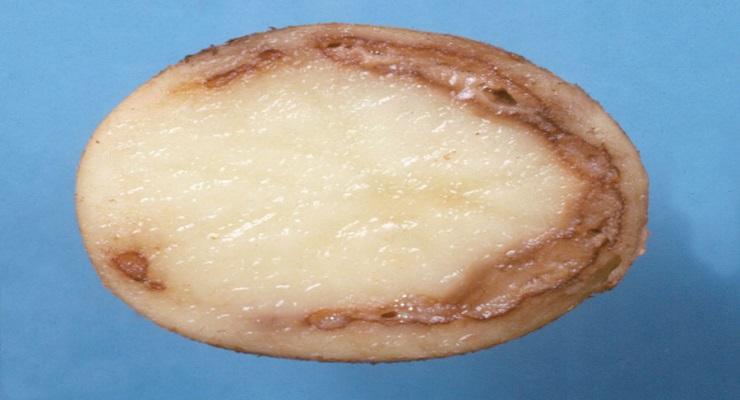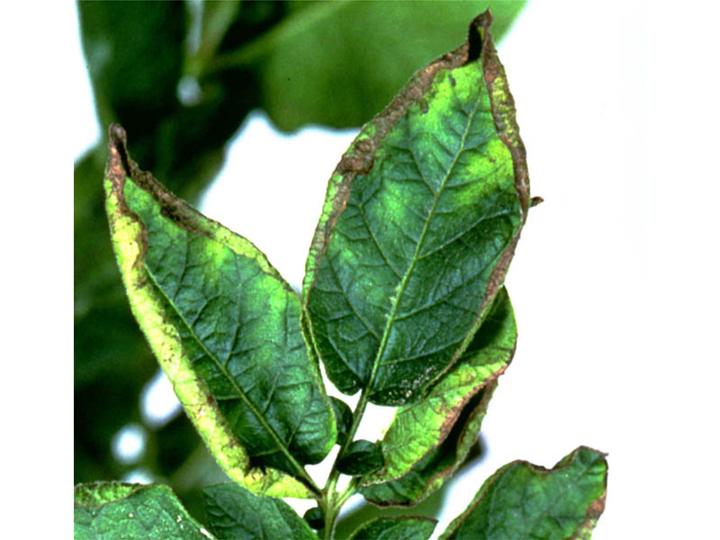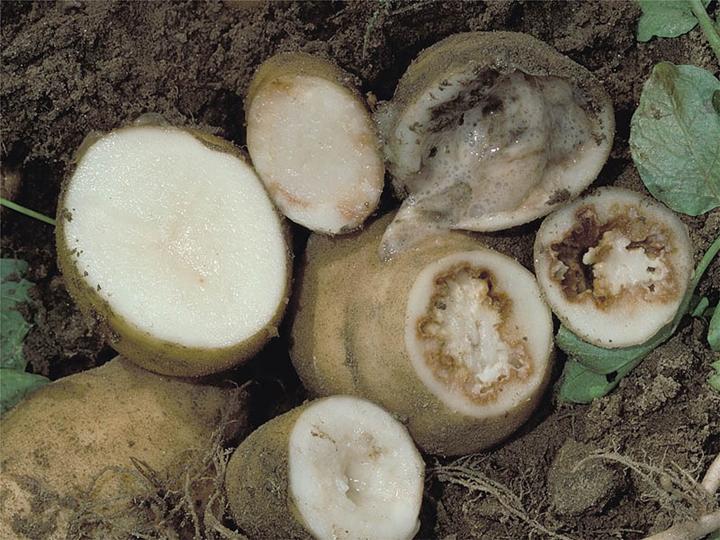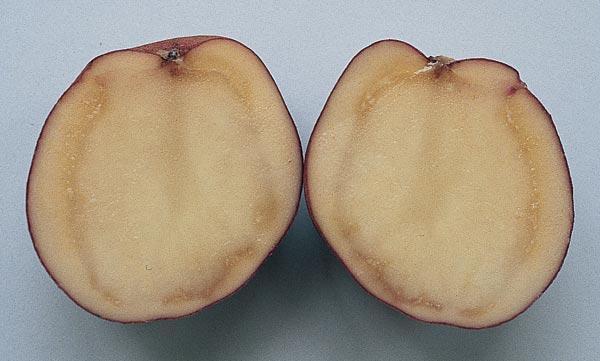Potato ring rot (Clavibacter sepedonicus) – identify and control

Potato ring rot, Clavibacter michiganensis ssp. sepedonicus was reported in 1914 in all major potato-growing countries, such as Germany, Denmark, Finland, Norway, Poland, Sweden, Russia. Annual losses are relatively small, although they can sometimes reach 50%.
Symptoms. The attacked plants show towards the end of the vegetation period a slight wilting of the lower leaves and a pale green discoloration. Then in yellow, before drying. In the tubers, at the beginning of the attack, creamy-yellow areas are observed along with the tissues with conducting vessels, near the underground stems. In a more advanced stage, in the area of the ring with conducting vessels appear caverns in which the tissues are softened. The attacked tubers, by pressing, remove bacterial exudate from the caverns. At this stage, reddish spots are observed around the eyes, and the coating has irregular cracks.



Potato ring rot is transmitted from one year to another through diseased tubers. In diseased plants, the infection of the tubers is done through the underground stems. The first symptoms appear in the area where the tubers are attached, then the bacteria travels through the conducting vessels. Planting machines used in areas where the disease occurs are an important source of infection. Experimental tests have shown that Colorado potato beetles, cicadas, or aphids can transmit bacteria.
Prevention and control. The most effective prevention method is planting healthy tubers and disinfecting planting and calibrating machines. In the seed lots, the use of sectioned tubers is not allowed, because 20-30 healthy tubers can be contaminated by the juice from one diseased tuber.
When importing potatoes, there must be certificates showing that the bacterium did not exist in the sending country, at least in the last 2 years of cultivation. Hygiene measures must be strictly observed in warehouses and packing centers, and containers and packaging materials must be new or disinfected.















































































































































































































































































































































































































































